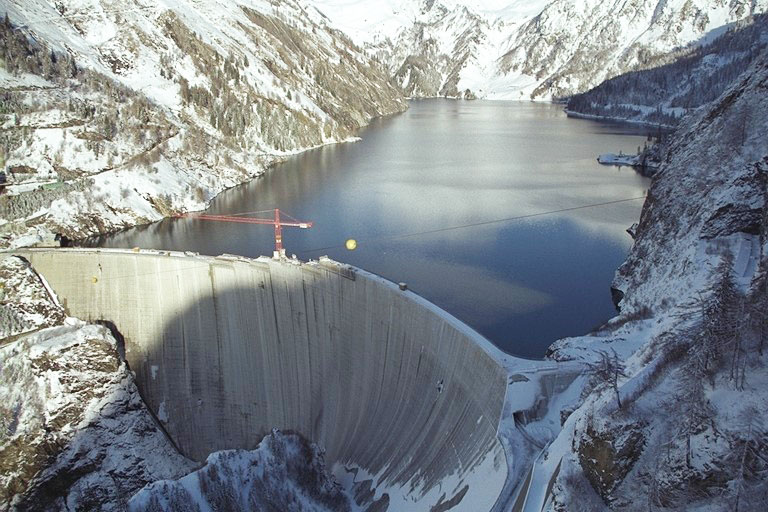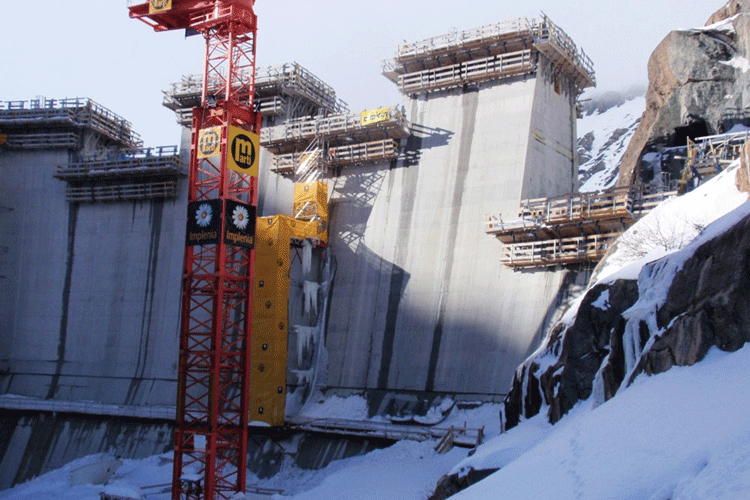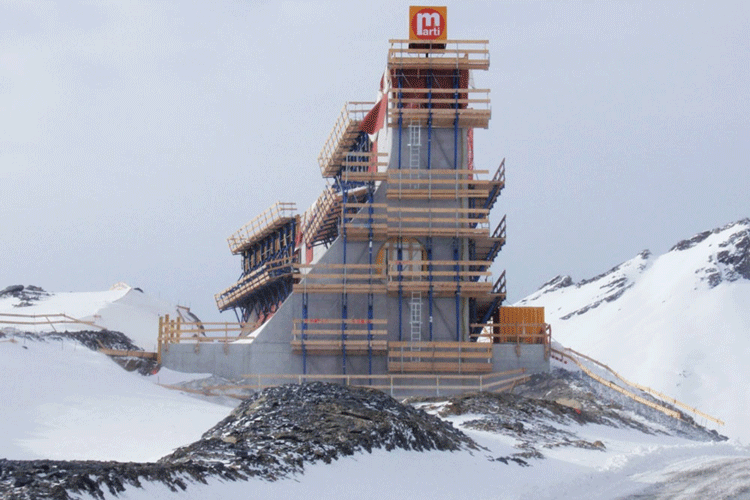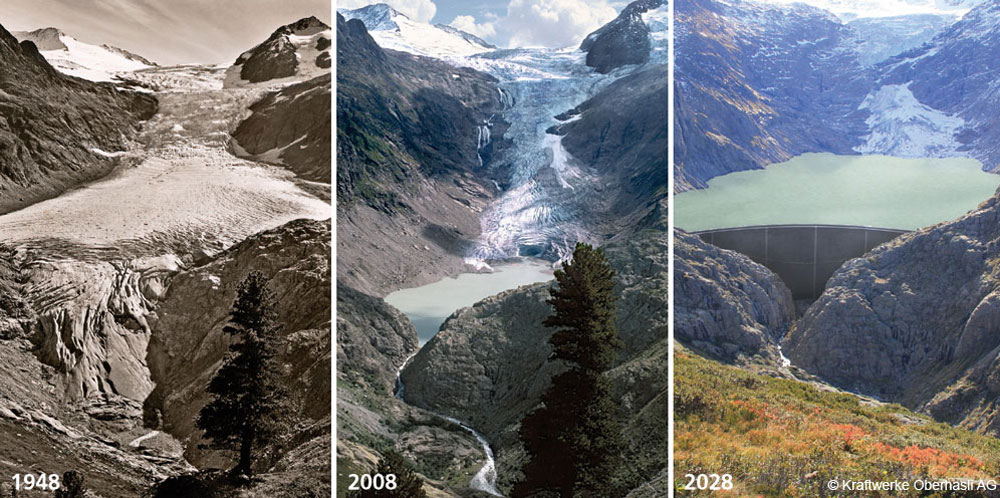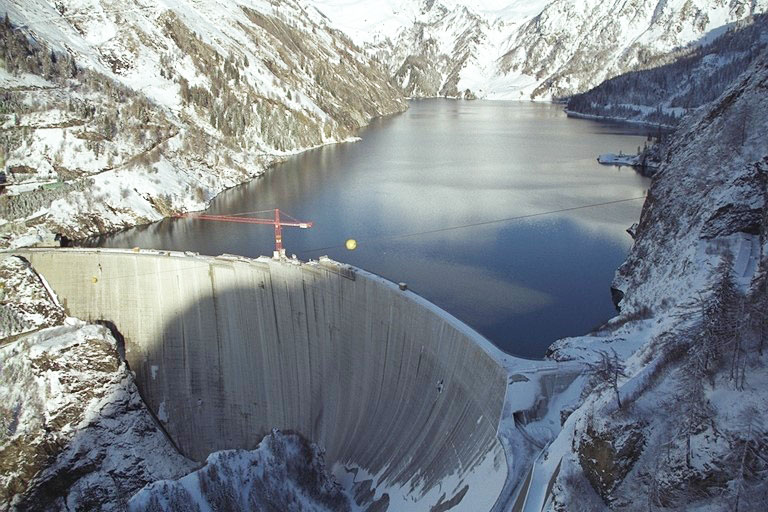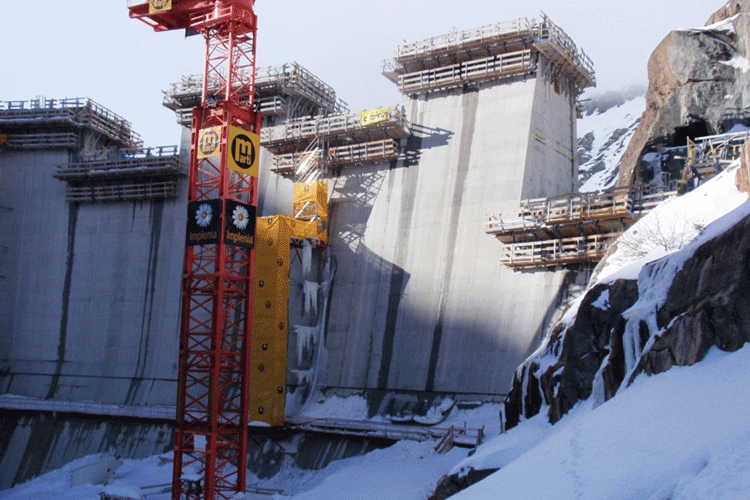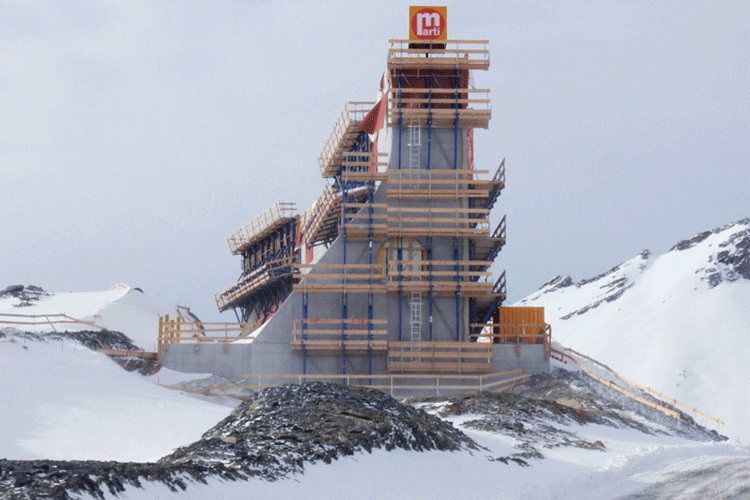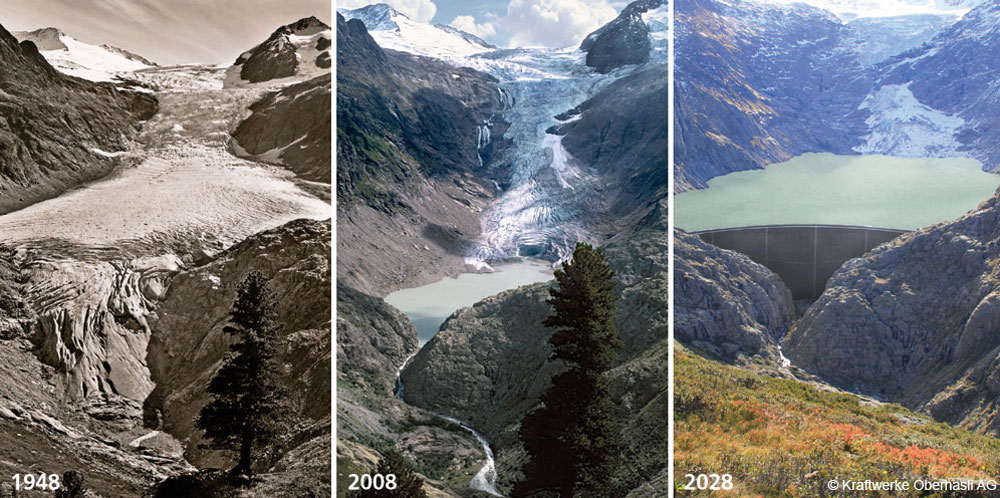Does Switzerland need more dams and reservoirs?
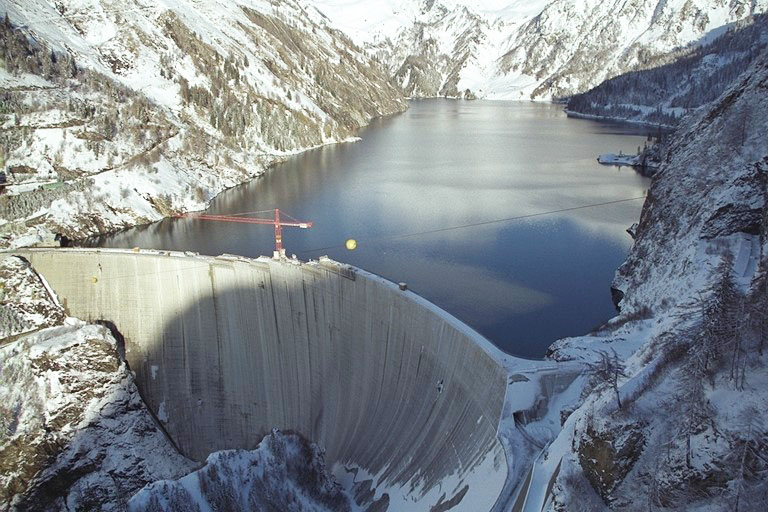
26 August 2016 - by Anton J. Schleiss
The tense economic situation and the high supply of subsidized energy from solar, wind, and coal in Europe has made it difficult for Swiss hydropower to remain economically competitive. The facilities and production of future hydropower projects must be more flexible in order to successfully face an uncertain market and to increase the security of supply in Switzerland. This can be accomplished by enhancing existing power plants, expanding existing reservoirs by dam heightening, and constructing new pumped storage facilities.
Importance of our reservoirs
More than half of the hydroelectric power production in Switzerland comes from storage power plants. Their electricity is available for use at any time and can be tapped into during peak demand. Switzerland, with its numerous storage reservoirs, controls the largest amount of stored capacity of the Alpine countries and therefore plays a leading role in the supply of peak energy in Europe. As nuclear energy is phased out in Switzerland, as called for by the Energy Strategy 2050 framework, the energy gap it leaves will be filled by hydroelectric power along with geothermal, solar, and wind energy. However, wind and solar energy are greatly dependent upon weather conditions and therefore subject to large, short-term fluctuations. Hydropower is much more flexible! To ensure the stability of the power grid and the security of supply in the future, the capacity of existing plants and the volume of existing reservoirs must increase. Thereby, Switzerland could take over more and more the function of a battery in the European grid.
Lack of winter energy
Switzerland is currently unable to supply all of its energy needs during the cold winter half year, importing a considerable amount of energy from neighboring countries every winter for the last 12 years. Each of the last 10 years, energy production has fallen short of consumption by 11 %, or 3700 GWh, on average. Swiss purchasing rights from French nuclear power plants currently help fill this need. However, this shortage of winter energy will increase in the future, especially due to the exit of nuclear energy. Through an increase of the storage capacity, more energy abundant in summer could be used to fill reservoirs and boost winter production. This would increase supply security and have a large impact on Switzerland’s international competitiveness.
Expanding current reservoirs is key
The building of new reservoirs in Switzerland is only possible to a limited extent. Therefore, the required storage capacity for the near future must be met by the heightening of existing dams. Several dams in Switzerland have already been heightened:
- Lac de Mausvoisin (VS): arch dam, originally 250 m high, heightened by 13.5 m; increased reservoir volume by 30 million m3; additional winter energy of 100 GWh
- Lago di Luzzone (TI): arch dam, originally 225 m high, heightened by 17 m; increased reservoir volume by 20 million m3; additional winter energy of 60 GWh
- Muttsee (GL): new gravity dam built, 25 m high; increased reservoir volume by 15 million m3
- Lac du Vieux Émosson (VS): gravity arch dam, originally 45m high, heightened by 21.5 m; increased reservoir volume by 15 million m3
With only minor heightenings (adding less than 10 % of the original dam height) of about 20 of the 160 existing large dams, winter production could be increased by over 2 TWh or 10 % compared to today. This increase could even reach 15 % by heightening some of the dams a bit more than 10 %. Thus, by expanding current storage reservoirs, the winter electricity deficit could largely be erased.
Are new dams and reservoirs still possible?
New, high elevation glacial lakes are emerging due to glacier melting. These new natural reservoirs can become dangerous if the end moraine is overrun by water, uncontrollably and quickly emptying into the valley below. New dams in these areas could both prevent disasters and be a source of clean energy, establishing storage reservoirs that allow for excess wind and solar energy to be stored and used during peak demand. Thus, lakes exposed by glacial retreat, the unfortunate product of climate change, could actually be used to provide clean energy in the decades to come. Along with enhancing electricity supply security, storage reservoirs help to regulate water flow during periods of draught and flooding. Thus, new dams and storage reservoirs are multipurpose projects that go beyond simple energy production.
One project that has already been under study is located at the foot of the Trift Glacier, which, due to receding, has unveiled a large natural lake. An arched dam around 180 m high could be constructed which would provide 220 GWh of flexible energy, able to be used when needed during peak hours of demand. The Trift Glacier is part of the KTI project FLEXSTOR, within the SCCER-SoE framework and together with the KWO. The research project aims to increase the flexibility of hydroelectric power operations in Switzerland through the development and testing of innovative strategies.
Basic literature for this blog article
- Schleiss, A., "Talsperrenerhöhungen in der Schweiz: energiewirtschaftliche Bedeutung und Randbedingungen", Wasser Energie Luft, Vol. 104, Heft 3, 2012, pp. 199-203
- Schleiss, A., Oberrauch, F., “Flexibilisierung der Wasserkraft in der Schweiz für zukünftige Aufgaben im internationalen Strommarkt”, Wasser Energie Luft, Vol. 106, Heft 3, 2014, pp. 175-178.
- Schleiss A. „Talsperren und Speicher als lebenswichtige Infrastrukturanlagen für den weltweiten Wohlstand". WasserWirtschaft 106(6): 12-15, 2016
Author

Prof. Dr. Anton J. Schleiss is the leader of the second SCCER-SoE work package «Hydropower» and director of the Laboratory of Hydraulic Constructions (LCH) at EPF Lausanne. Currently, he is also the President of the International Commission on Large Dams (ICOLD).
Learn More
Anton Schleiss and Swiss-Energyscope created two videos with basic information on the subject of hydropower in Switzerland.
The first video is about the advantages, different types, and future perspectives of hydropower in Switzerland. Click here to watch the video in German or French.
The second video is about the economic and environmental challenges of hydropower in Switzerland. Click here to watch the video in German or French.

